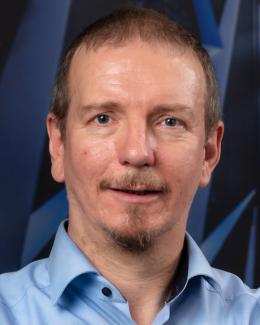
Stephan Irle
Senior R&D Staff Member and Group Leader, Computational Chemistry and Nanomaterials Sciences Group
Bio
Education
B.Sc. in Chemistry, University of Siegen, Germany, 1990; M.Sc. in Chemistry, University of Siegen, Germany, 1992; Ph.D. in Chemistry, University of Vienna, Austria, 1997.
Professional Experience
- 2020-present: Group Leader, Computational Chemistry and Nanomaterials Sciences Group, Computational Sciences and Engineering Division, Oak Ridge National Laboratory, U.S.A.
- 2019-present: Adjunct Faculty, Bredesen Center, University of Tennessee, U.S.A.
- 2017-2020: Computational Soft Matter Scientist, Computational Sciences and Engineering Division & Chemical Sciences Division, Oak Ridge National Laboratory, U.S.A.
- 2018-present: Adjunct Professor, Department of Chemistry & Biochemistry, University of Alabama, U.S.A.
- 2015-present: Adjunct Professor, Institute for Advanced Computational Science (IACS), Stony Brook University, U.S.A.
- 2012-2017: Principal Investigator, WPI-Institute of Transformative Bio-Molecules (ITbM), Japan
- 2011-2017: Professor, Department of Chemistry, Graduate School of Science, Nagoya University, Japan
- 2006-2011: Associate Professor, Institute for Advanced Research & Department of Chemistry, Nagoya University, Japan
- 2006: Fukui Research Fellow, Kyoto University, Japan
- 1998-2006: Associate Scientist and Systems Manager, Emory University, U.S.A.
- 1997: Research Associate, Emory University, U.S.A.
Brief Research Synopsis
Stephan Irle has performed research in computational chemistry and materials sciences in Germany, Austria, the United States, and Japan. His specialty is the quantum chemical study of complex systems. Target areas are soft matter and biosimulations, excited states of large molecules, and catalysis. Complementary studies of physicochemical properties, theoretical spectroscopy, and the development of methodologies including approximate quantum chemical methods and machine learning-based solutions for inverse design problems accompany this research.

